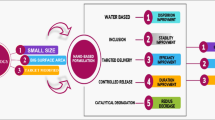Abstract
Measurements were taken of Bt protein expressed in the leaves of transgenic cotton (Gossypium hirsutum) transformed with a synthesized Bt (Bacillus thuringiensis) cry1A gene and its persistent level in larval bodies and faeces of a non-targeted insect pest, beet armyworm (Spodoptera exigua). We performed enzyme linked immunosorbent assays (ELISA) and bioassays using neonate larvae of cotton bollworm (Helicoverpa armigera) to detect the insecticidal activity of residual Bt protein at the second trophic level. The results showed that Bt protein content in functional leaves was different at various developmental stages and was different among plants at the same stage. Even though Bt protein concentration in the larval bodies and faeces decreased 97.5%–99% compared to that found in cotton leaves subsequently fed to beet armyworm larvae, it still had a lethal effect on neonate cotton bollworm larvae. Therefore, Bt protein present at the second trophic level had insecticidal activity. This result is important in understanding and predicting the effect of transgenic plants on nontarget organisms.
Similar content being viewed by others
References
Wei W, Ma K P, Shi J C. GMOs: The new hotspot in ecological research. Chin Sci Bull, 2003, 48(22): 2516–2518
Liu X X, Zhang Q W, Cai Q N, et al. Effect of Bt protein on development of different strains of the cotton bollworm, Helicoverpa armigera (Hübner) and the parasitoid, Microplitis mediator (Haliday). Acta Entomol Sin (in Chinese), 2004, 47(4): 461–466
Yang Y Z, Yu Y S, Ren L, et al. Effect of Bt transgenic cotton on parasitism of cotton bollworm. Entomol Knowl (in Chinese), 2001, 38(6): 435–437.
Schuler T H, Denholm I, Clark S J, et al. Effects of Bt plants on the development and survival of the parasitoid Cotesia plutellae (Hymenoptera: Braconidae) in susceptible and Bt-resistant larvae of the diamondback moth, Plutella xylostella (Lepidotera: Plutellidae). J Insect Physiol, 2004, 50: 435–443
Schuler T H, Potting R P J, Denholm I, et al. Parasitoid behaviour and Bt plants. Nature, 1999, 400: 825–826.
Cui J J, Xia J Y. Effects of transgenic Bt cotton on population dynamic of the main pests and their natural enemies. Acta Agri Univ Henan (in Chinese), 1997, 31: 351–356
Dutton A, Klein H, Romeis J, et al. Uptake of Bt-toxin by herbivores feeding on transgenic maize and consequences for the predator Chrysoperla carnea. Ecol Entomol, 2002, 27: 441–447
Dong L, Wan F H, Zhang G F. Impacts of transgenic Bt cotton on the development and fecundity of Chrysopa sinica Tjeder. Chinese J Eco-Agri (in Chinese), 2003, 11(3): 16–18
Zhang G F, Wan F H, Guo J Y, et al. Expressing of Bt toxin in transgenic Bt cotton and its transmission through pests Helicoverpa armigera and Aphis gossypii to natural enemy Propylaea japonica in cotton plots. Acta Entomol Sin (in Chinese), 2004, 47(3): 334–341
Guo J Y, Wan F H, Dong L, et al. Survival, development and fecundity of Chrysopa formosa feeding on Aphis gossypii propagated on transgenic Bt cotton. Chin Bull Entomol (in Chinese), 2005, 42(2): 149–154
Cui J J, Xia J Y. Effects of transgenic Bt cotton (with early maturity) on population dynamic of the main Pests and their Natural Enemies. Acta Gossypii Sin (in Chinese), 1998, 10(5): 351–356
Wu K, Li W, Feng H, et al. Seasonal abundance of the mirids, Lygus lucorum and Adelphocoris spp. (Hemiptera: Miridae) on Bt cotton in northern China. Crop Prot, 2002, 21: 997–1002
Head G, Brown C R, Groth M E, et al. CrylAb protein levels in phytophagous insects feeding on transgenic corn: implication for secondary exposure risk assessment. Entomol Exp Appl, 2001, 99: 37–45
Jia S R, Guo S D, An D C. Transgenic Bt Cotton (in Chinese). Beijing: Science Press, 2005
Chen S Y, Guan C Y, Wang G H, et al. Breeding of a new double-low rapeseed cultivar Xiangyou No. 15. J Hunan Agri Univ (Nat Sci) (in Chinese), 2003, 29(2): 103–105
Tang D J, Collins H L, Roush R T, et al. Survival, weight gain, and oviposition of resistant and susceptible Plutella xylostella (Lepidotera: Plutellidae) on Broccoli expressing Cry1Ac toxin of Bacillus thuringiensis. J Econ Entomol, 1999, 92: 47–55
SPSS Inc. SPSS for Windows Release 10.0.1. Chicago: SPSS Publications, 1999.
SAS Institute. SAS/STAT Users Guide. Release 6.03 edition. Cary: SAS Institute, 1998.
Sachs E S, Benedict J H, Stelly D M, et al. Expression and segregation of genes encoding Cry1A insecticidal proteins in cotton. Crop Sci., 1998, 38: 1–11
Zhang Y J, Wu K M, Guo Y Y. On the spatio-tempral expressing of the contents of Bt insecticidal protein and the resistance of Bt transgenic cotton to cotton bollworm. Acta Phytophyl Sin (in Chinese), 2001, 28: 1–6
Hilbeck A, Moar W J, Pusztai-Carey M, et al. Prey-mediated effects of Cry1Ab toxin and protoxin and Cry2A protoxin on the predator Chrysoperla carnea. Entomol Exp Appl, 1999, 91: 305–316.
Wei W, Qian Y Q, Ma K P. Pests resistance to transgenic Bt crops and its management strategies. Chin J Appl Environ Biol (in Chinese), 1999, 5(2): 215–228
Romeis J, Dutton A, Bigler F. Bacillus thuringiensis toxin (Cry1Ab) has no direct effect on larvae of the green lacewing Chrysoperla carnea (Stephens) (Neuroptera: Chrysopidae). J Insect Physiol, 2004, 50: 175–183
Dutton A, Romeis J, Bigler F. Assessing the risks of insect resistant trangenic plants on entomophagous arthropods: Bt-maize expressing Cry1Ab as a case study. BioControl, 2003, 48: 611–636
Raps A, Kehr J, Gugerli P, et al. Immunological analysis of phloem sap of Bacillus thuringiensis corn and of the nontarget herbivore Rhopalosiphum padi (Homoptera: Aphididae) for the presence of Cry1Ab. Mol Ecol, 2001, 10: 525–533
Author information
Authors and Affiliations
Corresponding author
About this article
Cite this article
Shi, H., Zhang, L., Hua, B. et al. Insecticidal activity of residual Bt protein at the second trophic level. CHINESE SCI BULL 51, 946–951 (2006). https://doi.org/10.1007/s11434-006-0946-2
Received:
Accepted:
Issue Date:
DOI: https://doi.org/10.1007/s11434-006-0946-2




